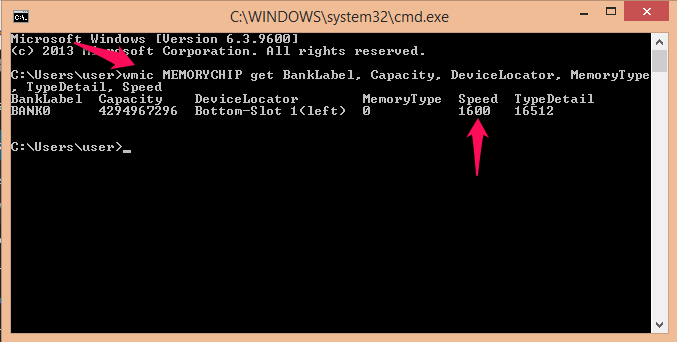

To find out if your RAM sticks are DIMM or SODIMM, follow these steps:

However, the two most widespread categories are DIMM and SODIMM. By form factor, there are twenty-five types of system memory. The word “form factor” (standard size) suggests certain standard dimensions of a memory module which also includes additional characteristics such as the module shape. The comprehensive list of supported memory typesīelow, find the comprehensive list of file types that can be identified by this command: For example, if you see 24 in the column, it means this computer is using DDR3memory modules.Īlso, you may see zeroes in the MemoryType column: it means the Windows system tool wmic.exe cannot identify the memory generation properly (it may happen if you’re using DDR4 modules), as such values are not provided in the specifications. The MemoryType column will contain a digit from zero to twenty-five that denotes a certain memory type. Whatever might be your reasons, Windows 10 can provide you with all the information you may need what is more, it saves you the trouble of having to open the computer case or install third-party tools, which may trigger a conflict of interest or cause compatibility issues. Besides, when you are configuring memory settings in the basic input / output system ( BIOS) or in the unified extensible firmware interface ( UEFI), a chance to have a look at memory information can help you to understand if a particular configuration was applied correctly. At least, you will be able to find a memory module of the same type which, as you already know, is fully compatible with your PC. If you are having issues with system memory, knowing the information on its manufacturer, part number and serial number will help you to contact the tech support and solve the problem. Knowing certain peculiarities and required standards of the system memory can help you decide on the correct capacity, speed and brand of RAM to buy a piece of compatible hardware for an upgrade. For example, if a computer works slowly because it has to run memory-intensive applications or games, then adding more system memory may give it a considerable boost. Getting to know the detailed information on system memory (also known as random-access memory, or RAM) can sometimes be very useful in helping you to take the correct decision if any problems arise.

There are many scenarios when the ability of Windows 10 to supply specifications data on installed computer hardware may come in handy.


 0 kommentar(er)
0 kommentar(er)
